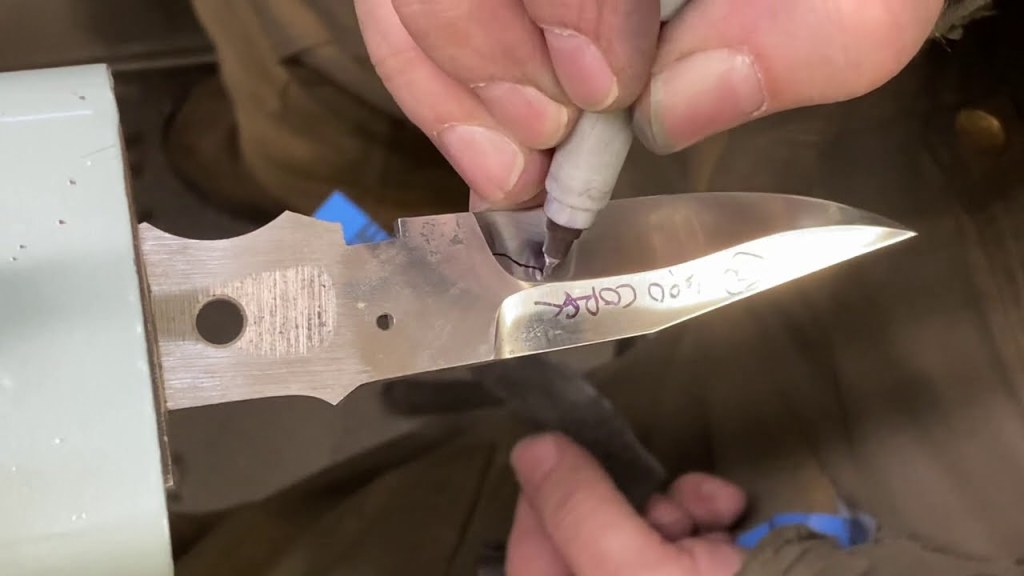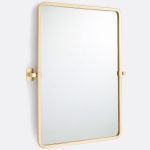Master The Art: Learn How To Mirror Polish A Knife By Hand And Transform It Into A Shining Beauty!
How to Mirror Polish a Knife by Hand
Welcome, good peoples! In this article, we will explore the art of mirror polishing a knife by hand. Polishing a knife to achieve a mirror-like finish not only enhances its aesthetic appeal but also improves its functionality. With the right techniques and tools, you can transform an ordinary blade into a masterpiece. So, let’s dive in and discover how to achieve that perfect mirror polish for your knife.
Introduction
Mirror polishing a knife involves the process of refining the blade’s surface to a highly reflective finish. This technique is often used by knife enthusiasts, chefs, and collectors to accentuate the beauty of their blades. The mirror-like shine not only adds a touch of elegance but also makes the knife more resistant to rust and corrosion.
2 Picture Gallery: Master The Art: Learn How To Mirror Polish A Knife By Hand And Transform It Into A Shining Beauty!


In this comprehensive guide, we will take you through the step-by-step process of mirror polishing a knife by hand. We will discuss the tools you’ll need, the techniques to follow, and the precautions to take. So, let’s get started on this journey to create a stunning mirror finish on your knife.
What is Mirror Polishing?
Mirror polishing is the art of achieving a highly reflective surface on a knife blade. It involves removing any imperfections, scratches, or dullness from the blade’s surface to reveal a smooth and glossy finish. The result is a mirror-like shine that enhances the knife’s appearance and performance.
Who Can Mirror Polish a Knife?

Image Source: ytimg.com
Anyone with a passion for knives can learn to mirror polish a knife. Whether you’re a professional chef, a knife collector, or simply someone who appreciates the beauty of a well-polished blade, mirror polishing can be a rewarding skill to acquire. With practice and patience, you can transform any dull knife into a work of art.
When Should You Polish Your Knife?
Polishing a knife is typically done when the blade has become dull, scratched, or tarnished. It is also a common practice among knife makers and enthusiasts to polish new knives before use. Additionally, regular maintenance and polishing can help prevent rust and corrosion, ensuring that your knife remains in optimal condition.
Where Should You Polish Your Knife?
You can polish your knife at home, in your workshop, or any clean and well-ventilated area. It is important to have a dedicated workspace with proper lighting, as the polishing process requires attention to detail. Ensure that you have a clean and clutter-free environment to prevent any accidents or contamination during the polishing process.
Why Mirror Polish a Knife?
There are several reasons why you may choose to mirror polish a knife. Firstly, it enhances the knife’s visual appeal, making it a beautiful piece to display or use. Secondly, the mirror-like finish improves the knife’s functionality by reducing friction and drag during cutting. Lastly, mirror polishing provides an added layer of protection against rust and corrosion, prolonging the lifespan of the blade.
How to Mirror Polish a Knife

Image Source: ytimg.com
To mirror polish a knife, follow these steps:
Step 1: Gather the Necessary Tools
Before you begin, gather the following tools:
Double-sided sharpening stone
Sanding papers of various grits
Polishing compounds
Microfiber cloth
Protective gloves and goggles
Step 2: Prepare the Knife
Ensure that your knife is clean and free from any dirt, debris, or oils. If necessary, wash the blade with warm soapy water and dry it thoroughly before proceeding.
Step 3: Start with Coarser Grits
Begin the polishing process by using the coarser grits of sanding papers. Start with a low grit, such as 400 or 600, and gradually work your way up to higher grits, such as 800, 1000, and beyond. This will help remove any scratches or imperfections on the blade’s surface.
Step 4: Polish with Polishing Compounds
Apply a small amount of polishing compound onto the blade and use a clean cloth to rub it in circular motions. Continue this process until you achieve a smooth and shiny surface. Make sure to use different compounds with varying levels of abrasiveness for optimal results.
Step 5: Finishing Touches
Once you are satisfied with the level of polish, use a microfiber cloth to buff the blade and remove any excess polishing compound. This will give your knife that final mirror-like shine.
Step 6: Clean and Protect
After polishing, clean the knife with warm soapy water to remove any residue. Dry it thoroughly and apply a thin layer of oil or lubricant to protect the blade from rust and corrosion.
Pros and Cons of Mirror Polishing a Knife
Advantages
Enhances the knife’s visual appeal
Improves cutting performance
Provides protection against rust and corrosion
Can increase the value of collectible knives
Creates a smooth and hygienic surface
Disadvantages
Requires time and effort
May remove some of the knife’s original markings
Can be challenging for beginners
Requires the use of proper safety equipment
May void the warranty on certain knives
Frequently Asked Questions
1. Can I mirror polish any type of knife?
Yes, you can mirror polish most types of knives, including stainless steel, carbon steel, and Damascus steel knives. However, it is important to consider the specific properties of the knife’s material and consult the manufacturer’s guidelines if necessary.
2. How often should I mirror polish my knife?
The frequency of mirror polishing depends on how often you use your knife and the condition of its blade. As a general guideline, you may choose to polish your knife every few months or whenever you notice dullness, scratches, or tarnish on the blade.
3. Can I use an electric polisher for mirror polishing?
While an electric polisher can speed up the process, it is not recommended for beginners. Hand polishing allows for better control and precision, especially when working with delicate or valuable knives.
4. How can I maintain the mirror polish on my knife?
To maintain the mirror polish on your knife, avoid using abrasive materials or harsh cleaning agents that can scratch or dull the surface. Clean the blade with a soft cloth or sponge after each use and store it in a dry place to prevent moisture buildup.
5. Can I mirror polish a knife with a serrated edge?
Mirror polishing a knife with a serrated edge can be challenging due to the intricate shape of the serrations. It is best to focus on polishing the flat portions of the blade and leave the serrated edges untouched to avoid altering their functionality.
Conclusion
Congratulations! You now have the knowledge and understanding to mirror polish a knife by hand. Remember to gather the necessary tools, follow the step-by-step process, and take precautions for safety. Whether you are a chef looking to impress with a perfectly polished blade or a collector seeking to showcase your knives’ beauty, mirror polishing is a skill worth mastering.
So, go ahead and give your knife the attention it deserves. Enjoy the process, and may your mirror-polished knife shine bright in your collection or kitchen!
Disclaimer: The information provided in this article is for educational purposes only. Mirror polishing a knife can be a delicate process, and it is important to exercise caution and follow proper safety guidelines. Always consult the manufacturer’s recommendations and exercise your own judgment when undertaking any knife maintenance or modification.
This post topic: Mirror



